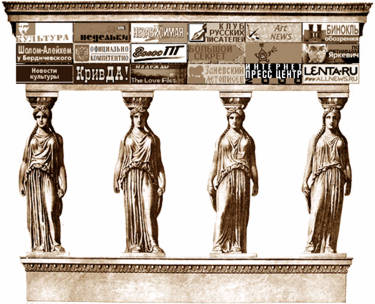|
Artemy Lebedev
§ 42. Born late and uglyOctober 12, 1999 |
|
The secret of success of the internet, or more precisely, the Web, is (unexpected as it may seem) the possibility of placing links. Computer networks and hypertext had lived for quite a while but never met. Their ultimate meeting wrought a miracle: plenty of grownups lost their minds because of the result of this merger. Before neither networks, nor hyperlinks had any sway over the masses. |
|
The pioneers of the internet made their personal pages that were far from perfection. But there was one thing they understood very well: to encourage internet development and keep folks amused, one has to place links. Which everyone did in surprisingly versatile ways: some folks placed links to web pages of their college buddies, some collected an astrophysics subject directory. The main thing was that no one ever doubted the importance of placing as many links as possible. |
|
All the most popular Russian web resources in 1995 (when 50 hits per day was a mind-boggling breakthru) also featured links to the whole nine yards of things. And that was a huge boon for all those wired to the Net at that time. |
|
The Western internet quickly caught the eye of people with big money. Large investors started to take interest in the Net and pumped billions into it. Home pages rapidly became accidental, while the most comprehensive collections of links evolved into corporations (as did Yahoo!). |
|
At the outset of the Russian internet (Runet) it followed in the Western peer’s tracks, but didn’t particularly cotton to the trailblazer’s ideas about links. |
|
Today’s scenarios may be as follows:
|
|
Housekeeping tip |
The 88×31 button format was invented by Netscape. The first picture made under this format looked like this: Microsoft followed suit and produced a similar button to advertise its Explorer browser. As soon as Microsoft joined the trend, people felt relieved and started to churn out buttons in unspeakable quantities. This was how one of the most stupid formats became widespread worldwide—betwixt and between. |
|
Still, most site owners are afraid of placing links. Those who got over their fear start writing letters like “Would you be as kind as to permit us to place a link to your website.” |
|
The availability of a large number of sites sporting many links to a variety of different resources is a solid basis for proper education and good taste on the internet. Lack of links leads to closed clubs and the imminent standstill. “Button” links do nothing but make a website look like a raggle-taggle bunch of banners, but for some reason appear to be the only way of placing a link on the Runet nowadays. |
 |
|
Résumé: one may and should place links to any page on the internet. If the owner of the website sends you a letter requesting that the link be removed, never hesitate to say no. |
|
|
|